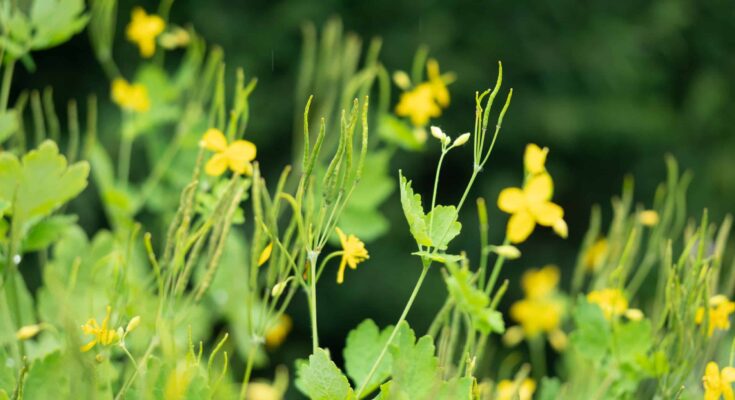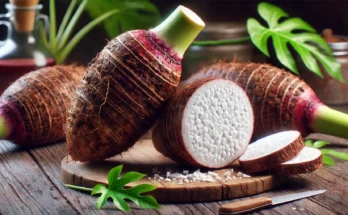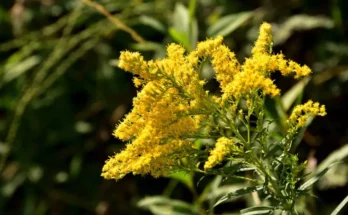Chelidonium majus, commonly known as Greater Celandine, is a perennial herb that has been used for centuries in traditional medicine across various cultures. Known for its distinctive yellow-orange flowers and rich, green foliage, this plant belongs to the poppy family (Papaveraceae) and is native to Europe and Asia. Over time, it has found its place in folk medicine for its therapeutic benefits, but it is important to understand both the advantages and potential risks associated with its use.
Botanical Characteristics of Chelidonium majus
Chelidonium majus stands out with its bright yellow flowers and distinctive, lobed leaves. The plant can grow up to 1 meter in height and produces a milky sap when its stems or leaves are broken. This sap is often a key part of the medicinal properties attributed to the plant.
The name “Greater Celandine” is derived from the Greek word “chelidon,” meaning swallow, as it was believed that swallows would use the plant to treat eye problems. The species name “majus” refers to its larger size compared to its close relatives.
Health Benefits of Greater Celandine
Chelidonium majus has been historically used for a variety of ailments, and scientific research continues to explore its potential health benefits. Here are some of the key therapeutic effects associated with the plant:
1. Digestive Health
Greater Celandine has been traditionally used to support digestive health, particularly in alleviating issues such as indigestion, bloating, and constipation. The alkaloids present in the plant, including berberine, have been shown to stimulate bile production, which aids in digestion and supports liver function. It is also believed to have mild laxative properties that help with constipation relief.
2. Liver Detoxification
Chelidonium majus has been utilized as a liver tonic and detoxifier for centuries. The plant’s bioactive compounds are thought to promote the excretion of toxins from the liver, helping to detoxify the body. Some studies suggest that Greater Celandine may help improve liver enzyme levels, which is essential for maintaining optimal liver health.
3. Antioxidant and Anti-inflammatory Properties
The plant is rich in antioxidants, which play a crucial role in neutralizing free radicals that can cause oxidative damage to cells. Chelidonium majus has also demonstrated anti-inflammatory effects, potentially beneficial in conditions like arthritis or other inflammatory disorders.
4. Pain Relief and Antispasmodic Effects
Chelidonium majus has long been used in traditional medicine to relieve pain and muscle spasms. The plant’s alkaloids have been shown to have mild analgesic properties, making it useful for treating conditions such as headaches, joint pain, and menstrual cramps.
5. Skin Conditions
The sap of Chelidonium majus has been applied topically to treat warts, corns, and other skin growths. This is due to its potent antibacterial and antiviral properties, which can aid in the removal of unwanted skin lesions. However, caution is advised, as the sap can cause skin irritation in some individuals.
Medicinal Uses and Applications
Chelidonium majus is typically used in various forms, including tinctures, extracts, and topical applications. It can also be consumed in capsule form or as an infusion, though its use should always be guided by a healthcare provider, especially since some parts of the plant are toxic in large doses.
1. Tinctures and Extracts
The most common medicinal preparation is a tincture or extract made from the fresh plant. These extracts are used to treat digestive issues, liver problems, and even respiratory conditions like bronchitis or asthma. Due to its potent active compounds, these preparations are often concentrated, and dosage must be carefully monitored.
2. Topical Application
The milky sap of the Greater Celandine is often applied directly to the skin to treat warts and other external growths. Some people use it as an alternative to over-the-counter wart removers, though it is essential to use caution to avoid irritation or burns.
3. Infusions and Teas
A less potent but still valuable form of Chelidonium majus is a tea made from the dried plant. Though more commonly used for its digestive benefits, infusions can also be helpful in mild cases of liver dysfunction or inflammation.
Precautions and Potential Side Effects
While Chelidonium majus offers many health benefits, it should be used with caution due to its potency and potential for toxicity. Here are some important precautions:
1. Toxicity and Overdose
The plant contains alkaloids such as chelidonine, which can be toxic in large amounts. Overuse of Greater Celandine can lead to side effects like nausea, vomiting, diarrhea, and even liver damage. It is important to adhere to recommended doses and seek professional guidance before use.
2. Skin Irritation
The sap of the plant can cause skin irritation or burns in sensitive individuals. It is advisable to perform a patch test before applying it to larger areas of the skin.
3. Pregnancy and Breastfeeding
Chelidonium majus is generally not recommended for use during pregnancy or breastfeeding due to its potential toxicity. Always consult a healthcare provider before using herbal remedies during these times.
4. Drug Interactions
Chelidonium majus may interact with certain medications, particularly those affecting the liver or digestive system. It can potentially alter the metabolism of other drugs, leading to adverse effects. Consulting with a healthcare provider is crucial to avoid interactions



